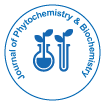Character Association and Genetic Divergence in Spring Wheat (Triticum Aestivum L.)
*Corresponding Author: Md. Mahathir Sarker, Department of Genetics and Plant Breeding, Exim Bank Agricultural University Bangladesh, Genetics And Plant Breeding, Bangladesh, Tel: +88 01765 764427, Email: mahathir.s@brac.netReceived Date: Jul 17, 2018 / Accepted Date: Jan 17, 2019 / Published Date: Jan 25, 2018
Citation: Mastafa SG, Hossain MS, Sarker MM, Hossain S, Ansary WR, et al. (2019) Character Association and Genetic Divergence in Spring Wheat (Triticum aestivum L.). J Phytochemistry Biochem 3:114.
Copyright: © 2019 Mastafa SG, et al. This is an open-access article distributed under the terms of the Creative Commons Attribution License, which permits unrestricted use, distribution, and reproduction in any medium, provided the original author and source are credited.
Abstract
The present research work was aimed at to study the genetic divergence and relationship between yield and yield contributing characters in 40 genotypes of spring wheat. The characters viz. plant height, spikes/plant, spike length, grains/spike, 1000 grain weight, harvest index, vegetative period, grain filling period, days to maturity, and grain yield/ plant were investigated and significant variations were observed among the genotypes. Divergence analysis clustered the studied genotypes into 7 diverse groups. The maximum number of genotypes were clubbed in cluster I followed by Cluster II, IV, V and VI. The cluster III and VII contained minimum numbers of genotypes. Comparison of cluster means for all the characters indicated considerable genetic divergence between the groups. The highest intra-cluster distance was obtained for cluster VII followed by Cluster VI and cluster III. The maximum inter-cluster distance was observed between genotypes of cluster V and VI followed by cluster VI and VII, and cluster II and V. The scattered diagram revealed that the genotypes G2, G16, G19, G22, G28, G36 and G37 took positions at the periphery of the diagram suggesting that these varieties/lines were more diverged from rest of the genotypes. Considering yield and contributing characters it appears that the genotypes G19 (6.54) and G37 (6.65) were promising for high yield potentiality. Therefore, these two genotypes could be selected for yield improvement program in spring wheat. Study of correlations showed that grain yield/plant was significantly and positively correlated with grains per spike at both phenotypic and genotypic levels and with spikes/plant at phenotypic level. Among the studied characters, spikes/plant showed the highest phenotypic coefficient of variation followed by grain yield per plant, harvest index and 1000-grain weight. Study of heritability indicated that the characters spikes/plant, 1000-grain weight, harvest index and grain yield/plant were highly heritable. Path coefficient analysis also confirmed that spikes/ plant, grains/spike, spike length, 1000-grain weight, and harvest index influenced grain yield directly in positive direction. So, these characters should be taken into consideration in selection for yield improvement.

 Spanish
Spanish  Chinese
Chinese  Russian
Russian  German
German  French
French  Japanese
Japanese  Portuguese
Portuguese  Hindi
Hindi